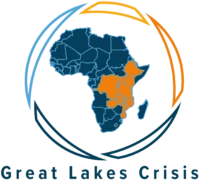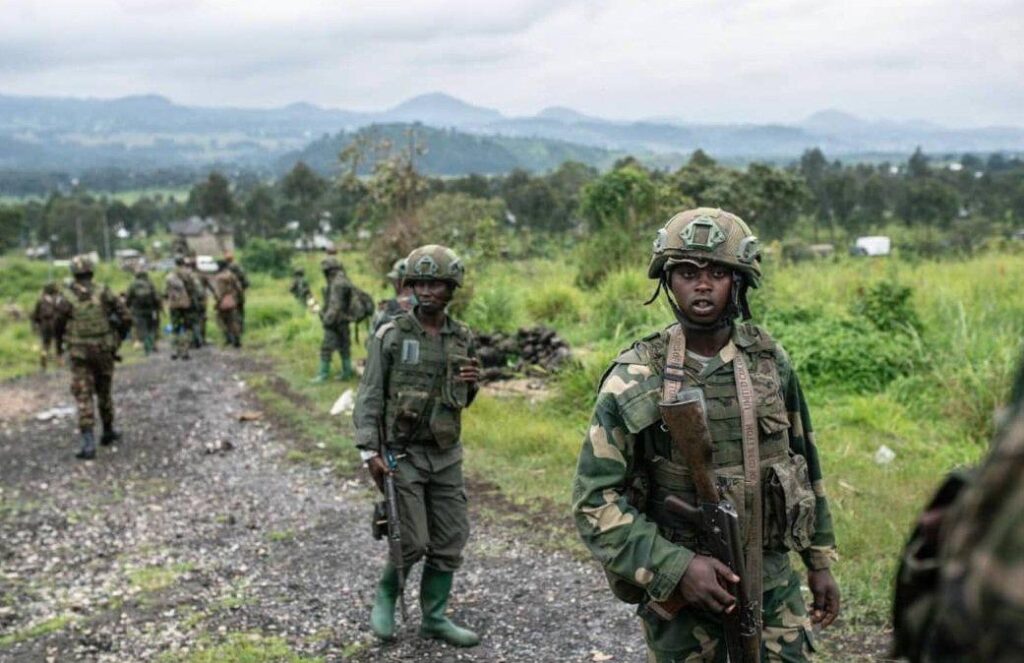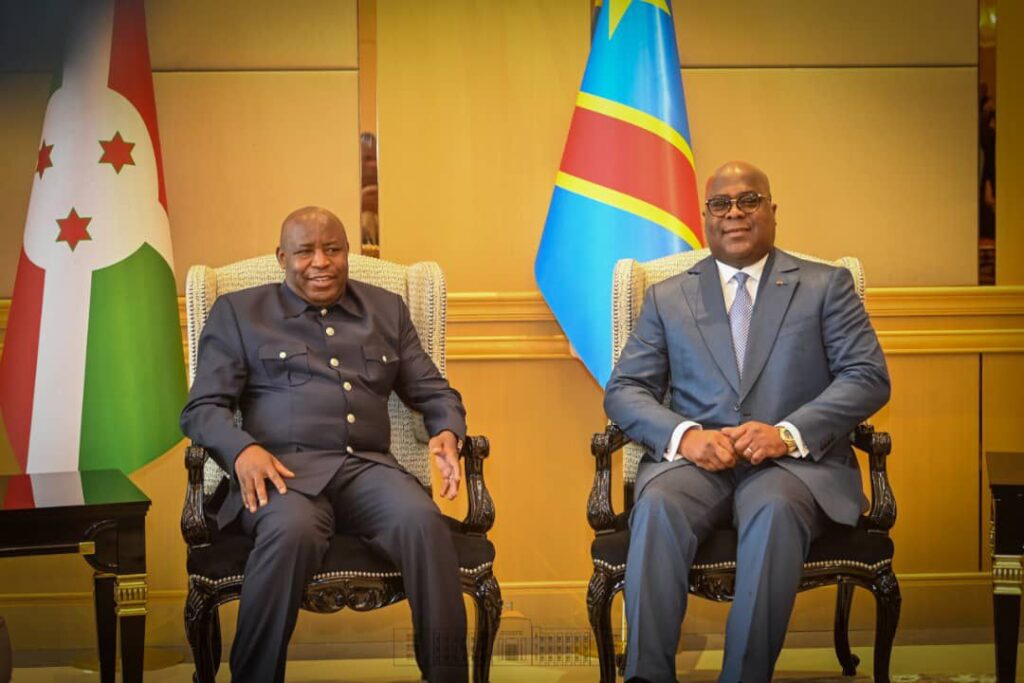Introduction
“In war, the greatest victory is in winning without fighting.” – Sun Tzu.
Since November 2021, Democratic Republic of Congo (DRC) President Félix Tshisekedi has consistently rejected calls for direct dialogue with the AFC/M23 rebel coalition, branding them as a terrorist organization unworthy of negotiation. Despite international pressure, he insisted on a military solution, forming a coalition comprising the Congolese armed forces (FARDC), the SADC military contingent, the Wazalendo militia,The Burundian forces, and Romanian mercenaries. His administration repeatedly vowed to defeat the rebels and restore control over the troubled eastern region.
However, in a stunning turn of events, Tshisekedi was forced to reconsider his stance after suffering a series of humiliating battlefield defeats, culminating in the fall of Goma, a strategic and economic hub, to the AFC/M23 coalition. This catastrophic loss not only exposed his administration’s military incompetence but also underscored his failure to make rational, pragmatic decisions before the crisis escalated.
This article examines how Tshisekedi’s miscalculations led to the fall of Goma, the broader implications of this failure for the DRC, and the lessons to be learned from his leadership shortcomings.
Tshisekedi’s Stubborn Rejection of Dialogue
Since the resurgence of the M23 rebellion in 2021, numerous voices called for diplomatic engagement to prevent large-scale conflict. The United Nations (UN) and the African Union (AU) repeatedly urged the DRC government to seek political solutions instead of relying solely on military action. Regional bodies such as the East African Community (EAC) and the Southern African Development Community (SADC) attempted to mediate, proposing peace talks to address the rebels’ grievances and de-escalate tensions in the Kivu region. These organizations even deployed military contingents to protect civilian populations.
Yet, Tshisekedi’s administration adamantly refused. His government adopted a hardline approach, insisting that negotiations would only legitimize a group they had labeled as terrorists. Instead of seeking a political resolution, Tshisekedi focused on military offensives, deploying poorly motivated and ill-equipped FARDC forces alongside SADC troops, the Wazalendo militia, Romanian mercenaries labeled as “instructors,” and Burundian forces to crush the AFC/M23 rebellion. This decision came after the humiliating dismissal of the East African Community (EAC) contingent, whom Tshisekedi accused of cohabiting with the AFC/M23 rebel coalition (Dube, 2023).
This approach not only failed but also emboldened the AFC/M23 rebels, who continued making significant territorial gains. As of early 2025, the rebels are advancing towards Bukavu, the capital of South Kivu Province. By dismissing peaceful solutions early on, Tshisekedi underestimated the resilience of the AFC/M23 coalition, ignored the political realities of eastern DRC, and set the stage for military disaster.
The Military Failures That Led to the Fall of Goma
The fall of Goma was not a sudden event but the result of months of poor military strategy, logistical weaknesses, and low troop morale. Tshisekedi’s government relied heavily on SADC forces, the Wazalendo militia, and mercenaries to counter the AFC/M23 coalition, yet coordination between these forces was weak.
According to the International Peace Information Service (2025), the Congolese military is plagued by poor leadership, outdated equipment, and widespread corruption, making it ill-prepared to confront a well-organized and well-equipped rebel force allegedly backed by the Rwanda Defense Force (RDF). As the AFC/M23 rebels advanced, FARDC troops and their allies abandoned key positions, revealing a lack of discipline and strategic planning. Many soldiers were unpaid, poorly supplied, and demoralized.Meanwhile, reports from the UN Group of Experts (2024) documented how the RDF has been supplying military equipment and training to the AFC/M23 rebels, enabling them to demonstrate superior tactics and capture strategic locations with minimal resistance.
Despite these clear warning signs, Tshisekedi continued to insist that military victory was imminent. His administration’s overconfidence and refusal to reassess its strategy ultimately led to the humiliating fall of Goma, one of the DRC’s most important cities.
The Human Cost of Tshisekedi’s Failed Leadership
Tshisekedi’s failure to act responsibly has had devastating humanitarian consequences. According to a recent report by the UNHCR (2025), the ongoing conflict has displaced over 237,000 civilians since the start of 2025, bringing the total number of internally displaced people to nearly 4.6 million since the beginning of the conflict. The fall of Goma triggered an exodus of desperate families fleeing for safety, exacerbating an already dire humanitarian crisis.
By refusing dialogue, Tshisekedi prolonged unnecessary bloodshed. The war has resulted in thousands of deaths, increased ethnic tensions, and created an environment where FARDC troops, undisciplined Wazalendo militiamen, warlords, and other armed groups exploit the chaos for their own gain. Had he engaged in meaningful peace talks earlier, many lives could have been saved.
Tshisekedi’s Forced U-Turn: A Weak and Desperate Move
After years of dismissing negotiations, Tshisekedi is now being forced into a humiliating reversal. A joint meeting of EAC and SADC ministers in Dar es Salaam on February 7, 2025, recommended that the DRC engage in dialogue with non-state actors, including the AFC/M23 rebels. Although Tshisekedi has not publicly objected, his silence suggests reluctant acceptance.
This shift comes not from a position of strength but from weakness and desperation. Having lost Goma and facing a crumbling military front, he has no choice but to engage in negotiation; an outcome he had stubbornly resisted for years.
On February 4, 2025, following the fall of Goma, National Assembly Speaker Vital Kamerhe met with Tshisekedi. In his speech at the opening of an extraordinary parliamentary session, Kamerhe stated, “The President is willing to negotiate, but not to sell out the country” (Media Congo, 2025). This sudden reversal not only exposes Tshisekedi’s failure to lead with foresight but also damages his credibility on both the domestic and international stage. Instead of appearing as a strong leader defending national sovereignty, he now looks like a president who gambled on war, lost, and was left with no choice but to negotiate on the AFC/M23 rebels’ terms.
Lessons from Tshisekedi’s Leadership Failure
The fall of Goma and Tshisekedi’s forced retreat from his hardline stance offer critical lessons on leadership and governance:
- Diplomacy Should Never Be Ignored – Dialogue is crucial in resolving conflicts, and dismissing it outright leads to unnecessary bloodshed. The UN Office for the Coordination of Humanitarian Affairs (OCHA, 2025) reported that at least 900 people were killed in the siege of Goma, with incidents of summary executions and sexual violence. These atrocities could have been prevented had diplomacy been pursued earlier.
- Overconfidence Can Be a Leader’s Downfall – Tshisekedi’s insistence that he could defeat the AFC/M23 rebels militarily, despite overwhelming evidence to the contrary, led to his greatest failure.
- Weak Governance Undermines National Security – The dysfunction within FARDC, rampant corruption, and reliance on undisciplined militia groups like the Wazalendo contributed to the military collapse in Goma. Strong leadership is needed to reform institutions and enhance national defense.
- Listening to Regional and International Partners is Key – Tshisekedi ignored repeated warnings and diplomatic initiatives from international bodies, choosing arrogance over pragmatism. This alienated potential allies who could have helped find a solution earlier.
Conclusion
The fall of Goma and the probable upcoming fall of Bukavu are direct consequences of Tshisekedi’s arrogance, poor leadership, and refusal to engage in meaningful dialogue before it was too late. His reliance on a failing military strategy, dismissal of international appeals, and failure to address structural weaknesses within the government and army led to one of the most humiliating moments of his presidency.
Now, faced with no other option, he is being forced into negotiations; talks that could have been initiated years ago, before the loss of thousands of lives and the displacement of countless civilians. Tshisekedi’s leadership failure serves as a stark warning: stubbornness and arrogance in governance come at a steep price, often paid in blood and suffering. As the DRC navigates this crisis, one question remains: Can Tshisekedi salvage his credibility, or has his leadership already been irreparably damaged?
References
Dube, M. (2023, May 10). DRC President accuses East African Forces of ‘Cohabiting’ with M23 rebels. Vox of Africa.
International Peace Information Service. (2025). The (new) M23 offensive on Goma: Why this long-lasting conflict is not only about minerals and what are its implications? Q&A. ReliefWeb. https://reliefweb.int
Media Congo. (2025, February 4). Vital Kamerhe sur l’agression rwandaise/M23: “Le président Tshisekedi veut négocier mais pas vendre le Congo”. Media Congo.
Radio Okapi. (2025, February 4). OCHA note l’intensification des violences dans la province du Nord-Kivu (rapport). Radio Okapi. https://www.radiookapi.net
UNHCR. (2025, January 17). Escalating violence in eastern DRCongo displaces more than 230,000 since start of the year. UNHCR. https://www.unhcr.org
United Nations Security Council. (2024, December 27). Security Council Resolution 2738 (2024): Letter dated 27 December 2024 from the Group of Experts on the Democratic Republic of the Congo addressed to the President of the Security Council – Mid-term report of the Group of Experts on the Democratic Republic of the Congo. United Nations.


